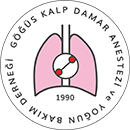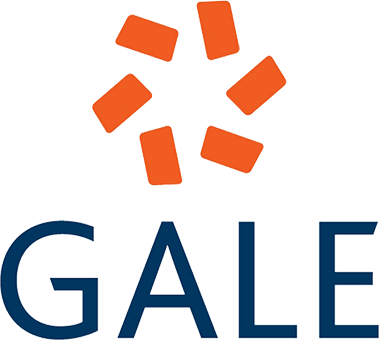

Yüksek Riskli Hastalarda Weaning Başarısızlığı Açısından Noninvaziv Ventilasyon, Yüksek Akışlı Oksijen Tedavisi ve Konvansiyonel Oksijen Tedavisinin Karşılaştırılması
İbrahim Mungan1, Sema Turan21Kahramanmaraş Şehir Hastanesi, Yoğun Bakım Üniitesi, Kahramanmaraş, Türkiye2Ankara Eğitim Ve Araştırma Şehir Hastanesi, Yoğun Bakım Ünitesi, Ankara, Türkiye
Amaç: Yoğun bakım ünitesine yatışın en yaygın nedeni akut solunum yetmezliğidir ve ekstübasyondan sonra PaO2 düzeyini yeterli düzeye getirmek için başlıca üç yöntem kullanılır: konvansiyonel oksijen tedavisi (KOT), yüksek akışlı oksijen tedavisi (YAO) ve non-invaziv ventilasyon (NIV). Bu çalışmanın amacı, yüksek riskli hasta popülasyonunda NIV veya YAOnun weaning başarısızlığını azaltmada yararlı olup olmadığını belirlemek ve bu noninvaziv yöntemleri karşılaştırmaktır.
Yöntem: Bu prospektif, gözlemsel kohort çalışma Mart 2019 ve Mart 2020 tarihleri arasında Türkiyedeki bir üçüncü basamak devlet hastanesinde gerçekleştirildi. Çalışmamız KOT, YAO ve NIV olmak üzere 3 ana grubu içermektedir.
Bulgular: Çalışma süresi boyunca, bu çalışmaya 71 hasta kaydedildi ve 24 hasta KOT grubuna, 22 YAO grubuna ve 25 hasta NIV grubundaydı. Ekstübasyon öncesi ortalama entübasyon süresi 5,8 gündü ve ortalama PaO2 ekstübasyondan 6 saat sonra YAO grubunda en yüksekti ve fark istatistiksel olarak anlamlıydı. YAO grubu ekstübasyondan hemen önce ve ekstübasyondan 6 saat sonra en yüksek PaO2/FiO2 değerine sahipti. Yeniden entübasyon oranı YAO grubunda en düşüktü ve hastanede toplam kalış süresi gibi klinik sonuçlar da YAO grubunu destekler şekilde farklılık gösterdi.
Sonuç: Çalışmamızın sonuçları, NIV ve YAOnin KOTye kıyasla yüksek riskli hastada weaning başarısızlığı ve ölüm oranını azaltmada faydalı olduğunu göstermektedir. Bu non-invaziv yöntemler karşılaştırıldığında, grupların temel özelliklerinin farklı olmasına rağmen, bu faydada YAOnin tercih edilebilir olduğu görülmüştür.
Anahtar Kelimeler: non-invaziv ventilasyon, yüksek akışlı oksijen tedavisi, konvansiyonel oksijen tedavisi, weaning başarısızlığı, yüksek riskli hasta
The Comparison of Noninvasive Ventilation, High-Flow Oxygen Therapy and Conventional Oxygen Therapy for Weaning Failure in High-Risk Patients
İbrahim Mungan1, Sema Turan21Kahramanmaraş Şehir Hastanesi, Department Of Intensive Care Unit, Kahramanmaraş, Turkey2Ankara Eğitim Ve Araştırma Şehir Hastanesi, Department Of Intensive Care Unit, Ankara, Turkey
Objective: The most common reason for intensive care unit admission is acute respiratory failure and after extubation mainly three methods are used to bring the PaO2 level to a sufficient level: conventional oxygen therapy (COT), high flow oxygen therapy (HFO), and non-invasive ventilation (NIV). The aim of this study was to determine if NIV or HFO is beneficial in decreasing weaning failure in high-risk patient population (HRP) and compare these noninvasive methods.
Methods: This prospective, observational cohort study was conducted between March 2019 and March 2020 in a tertiary state hospital in Turkey. Our study included 3 main groups as COT, HFO, and NIV.
Results: During the study period, 71 patients were enrolled in this study and 24 patients were in the COT group, 22 HFO group, and 25 in the NIV group. The mean duration of mechanical ventilation assistance (MVA) before extubation was 5.8 days and the mean PaO2 was highest in the HFO group 6 hours after extubation with a statistically significant difference (p<0.001). The HFO group had the highest PaO2/FiO2 immediately before and 6 hours after extubation. The reintubation rate was lowest in the HFO group and the other outcomes as total MVA duration, length of stay in ICU and hospital also differed between groups favoring the HFO group.
Conclusion: The results of our study suggest that NIV and HFO were beneficial in decreasing weaning failure and 30-day mortality rate among HRP compared to COT. When these noninvasive methods were compared, it was observed that HFO was preferable because of these advantages although the main characteristics of the groups were different.
Keywords: non-invasive ventilation, high flow oxygen therapy, conventional oxygen therapy, weaning failure, high-risk patients
Makale Dili: İngilizce
(1056 kere indirildi)

















